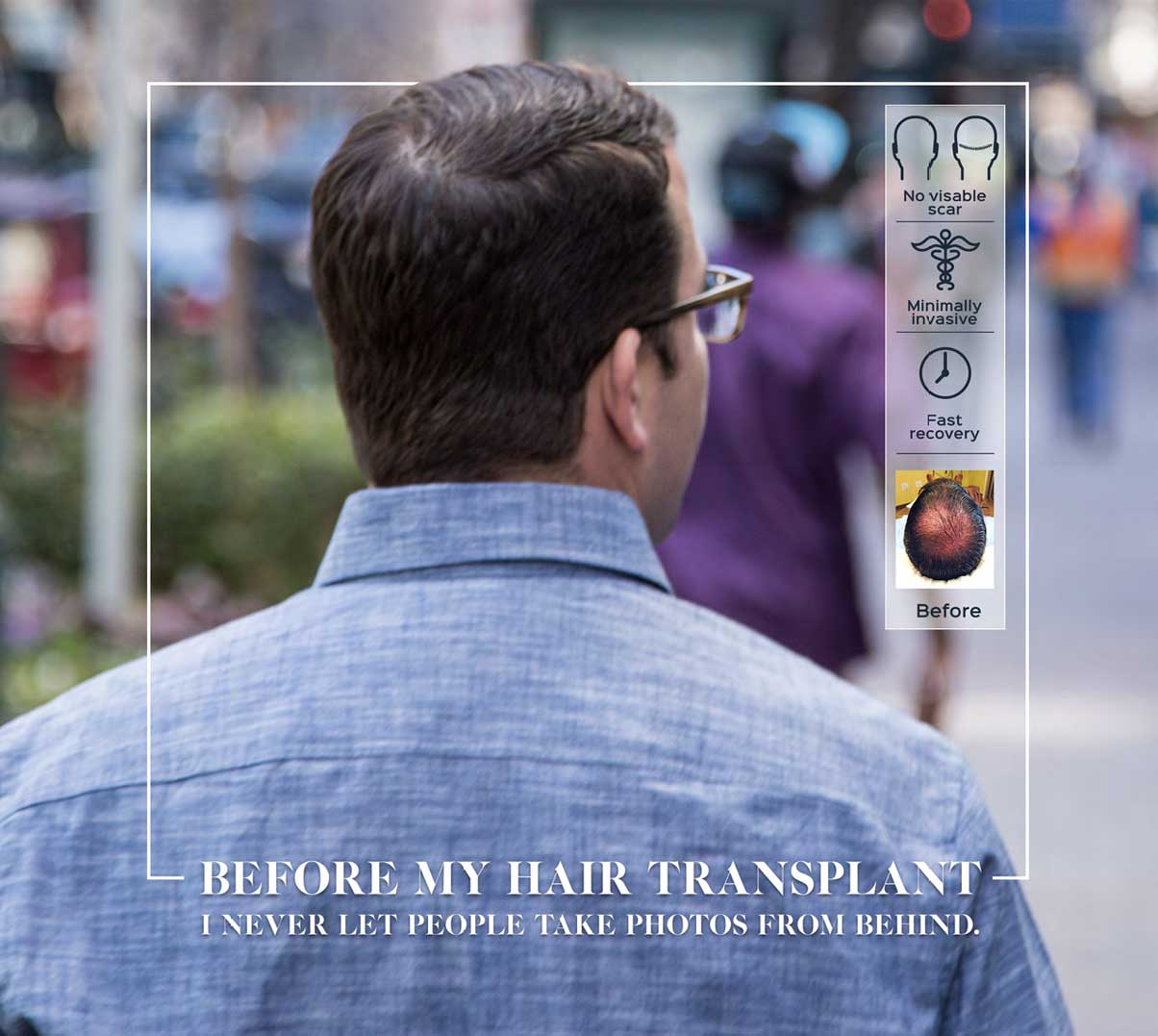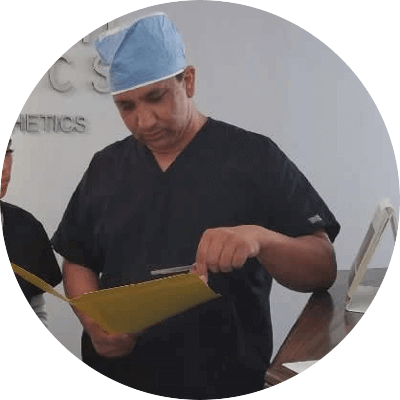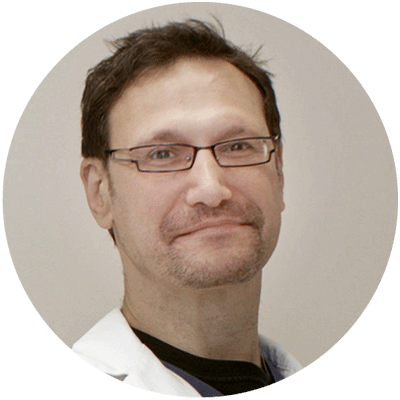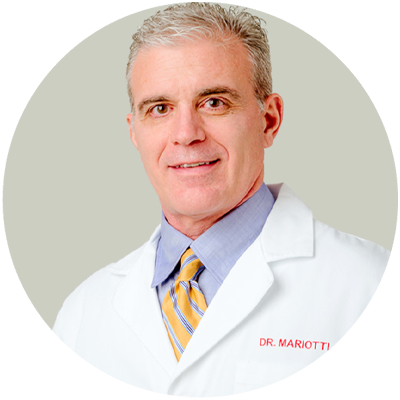HAIR LOSS SUPPLEMENTS & PRESCRIPTIONS
GOAL
Invigorate blood circulation and stimulation in the scalp, encouraging follicles to grow hair. Optimal results when combined with other methods of regrowth such as growth factor injections and transplant.
TECHNOLOGY
Prescription drugs, supplements, and products
DOWNTIME
None
COST | PRICE
Varies depending on the treatment prescribed.

OUR HAIR REGROWTH EXPERTS
Offer a Full Spectrum of Hair Regrowth Options such as
FUE Transplant, Growth Factor Injections, LED Therapy and Prescriptions
PRESCRIPTION OPTIONS FOR HAIR LOSS
Hair loss is a common condition, both in men and women at any age, and the use of prescription medications is a convenient strategy to help prevent further hair loss and, whenever possible, to regrow hair. In addition to medications, hair loss treatments include surgery and PRFM injections.
The medical term for hair loss is Alopecia, an issue that is more common in men, affecting 60% of men and up to 40% of women. There are many different causes of alopecia, some permanent, others temporary. Hair loss can be set off from genetics, illness, stress, medical conditions, hormonal imbalance, aging, and even diets.
It is also important to note that not all cases of hair loss require treatment or can be treated. Temporary hair loss, especially caused by childbirth or jet lag, is usually self-correcting and regrowth occurs within six to nine months.
Professional guidance and patient education are key in the management of hair loss. The right treatment approach depends on identifying which type of hair loss the patient has. To best understand the cause and possible triggers of hair loss, the doctor will conduct a thorough history and examination. Only then prescribe the appropriate medication or possibly refer the patient to another form of treatment.
As a guideline, three medications have evidence to support their use in pattern hair loss: Finasteride, Dutasteride, and Minoxidil. There are other drugs used to treat hair loss that are in the pipeline, but still in the research phase and not FDA-approved.
Specific case scenarios can even involve Testosterone replacement treatments, the use of Antiandrogens, Corticosteroids, or Antifungal Medications. Alternatively, natural remedies such as essential oils and some vitamin supplements may contribute to hair growth and strength. Yet, there needs to be more research regarding their properties and alleged results.
Hair loss is a common condition, both in men and women at any age, and the use of prescription medications is a convenient strategy to help prevent further hair loss and, whenever possible, to regrow hair. In addition to medications, hair loss treatments include surgery and PRFM injections.
The medical term for hair loss is Alopecia, an issue that is more common in men, affecting 60% of men and up to 40% of women. There are many different causes of alopecia, some permanent, others temporary. Hair loss can be set off from genetics, illness, stress, medical conditions, hormonal imbalance, aging, and even diets.
It is also important to note that not all cases of hair loss require treatment or can be treated. Temporary hair loss, especially caused by childbirth or jet lag, is usually self-correcting and regrowth occurs within six to nine months.
Professional guidance and patient education are key in the management of hair loss. The right treatment approach depends on identifying which type of hair loss the patient has. To best understand the cause and possible triggers of hair loss, the doctor will conduct a thorough history and examination. Only then prescribe the appropriate medication or possibly refer the patient to another form of treatment.
As a guideline, three medications have evidence to support their use in pattern hair loss: Finasteride, Dutasteride, and Minoxidil. There are other drugs used to treat hair loss that are in the pipeline, but still in the research phase and not FDA-approved.
Specific case scenarios can even involve Testosterone replacement treatments, the use of Antiandrogens, Corticosteroids, or Antifungal Medications. Alternatively, natural remedies such as essential oils and some vitamin supplements may contribute to hair growth and strength. Yet, there needs to be more research regarding their properties and alleged results.
Dr. Khan, MD
Roy Stoller, DO - Plastic Surgeon
Louis Mariotti, DO - Plastic Surgeon
Dr. Louis Mariotti, DO, is a Board Certified specialist in Facial Plastic and Head and Neck Surgery and Fellowship trained inHair Restoration Medicine and Surgery. Dr. Mariotti is a dedicated medical educator and has participated, presented, and instructed other surgeons at Facial Plastic Surgery conferences on Hair Restoration topics.
ONE HAPPY HAIR TRANSPLANT PATIENT
1,100 Grafts
12 MONTHS
$4,500 TOTAL
NO VISIBLE SCAR
MINIMALLY INVASIVE
FAST RECOVERY

BOOK NOW TO TAKE ADVANTAGE OF WINTER PROMOTION:
$2,000 OFF or 40% OFF
READY TO BOOK A FREE CONSULTATION?
Easy Peasy!
Submit Form Below or Click to Book Online or Call (212) 219-1990
Easy Peasy!
Submit Form Below or Click to Book Online or Call (212) 219-1990
FREQUENTLY ASKED QUESTIONS
WHICH ARE THE BEST KNOWN MEDICATIONS FOR HAIR LOSS TREATMENT?
●FINASTERIDE
Finasteride, also known by its brand name Propecia, is a medication that works by controlling the body's production of the hormone Dihydrotestosterone or DHT. High levels of DHT in the blood can shrink hair follicles and shorten their cycle, causing hair to thinner, or to grow more brittle. DHT can also make it take longer for follicles to grow new hairs once old hairs fall out. By decreasing the amount of DHT, Finasteride leads to increased hair regrowth and slower hair loss. Thankfully, hair growth on other parts of the body is not affected by the treatment. Overall, women should not take Finasteride because of how it interacts with female hormones and the potential risks during pregnancy and breastfeeding.
Finasteride was approved for safety and efficacy in 1997 by the FDA and has, therefore, been in use for almost 25 years, being the most known and tested option in prescription drugs for hair loss. In most cases, the Finasteride dosage used is 1mg, irrespective of height, weight, or age.
●MINOXIDIL
Minoxidil, also known commercially as Rogaine, is a drug originally used to treat high blood pressure (hypertension). It works by relaxing blood vessels, channeling and increasing blood flow in the roots of follicles, enhancing hair growth, and reducing hair loss. Minoxidil has been used for hair loss treatment for several decades. It is available by prescription, in oral tablet form, and nonprescription over the counter in topical liquid, foam, and shampoo forms. The termination of treatment, oral or topical, results in progressive hair loss within 12 and 24 weeks. Topical minoxidil is the only FDA‐approved treatment for androgenetic alopecia (AGA) in women. Topical minoxidil is usually available at 2% and 5% dosages, both as a lotion and foam, and can be found in most pharmacies. Oral dosage is based on the patient's medical condition and response to treatment, with doses varying from 0.25 and 2 mg daily.
●DUTASTERIDE
Dutasteride is also known by the brand name in which it is sold: Avodart. It is an oral prescription medication used most commonly to treat prostate enlargement. High levels of the hormone dihydrotestosterone (DHT) in the blood can lead to an enlarged prostate, and the use of Dutasteride works by preventing DHT from forming. Since the DHT hormone is also responsible for male pattern baldness, it started to be also prescribed as a medication to treat hair loss, in a similar process to Finasteride. The typical treatment consists of a 0.5mg oral dose per day, and results can take anywhere between 3-6 months to show. But dosage can vary depending on the patient. Studies comparing dutasteride and finasteride have indicated that the first one can be more effective.
Finasteride, also known by its brand name Propecia, is a medication that works by controlling the body's production of the hormone Dihydrotestosterone or DHT. High levels of DHT in the blood can shrink hair follicles and shorten their cycle, causing hair to thinner, or to grow more brittle. DHT can also make it take longer for follicles to grow new hairs once old hairs fall out. By decreasing the amount of DHT, Finasteride leads to increased hair regrowth and slower hair loss. Thankfully, hair growth on other parts of the body is not affected by the treatment. Overall, women should not take Finasteride because of how it interacts with female hormones and the potential risks during pregnancy and breastfeeding.
Finasteride was approved for safety and efficacy in 1997 by the FDA and has, therefore, been in use for almost 25 years, being the most known and tested option in prescription drugs for hair loss. In most cases, the Finasteride dosage used is 1mg, irrespective of height, weight, or age.
●MINOXIDIL
Minoxidil, also known commercially as Rogaine, is a drug originally used to treat high blood pressure (hypertension). It works by relaxing blood vessels, channeling and increasing blood flow in the roots of follicles, enhancing hair growth, and reducing hair loss. Minoxidil has been used for hair loss treatment for several decades. It is available by prescription, in oral tablet form, and nonprescription over the counter in topical liquid, foam, and shampoo forms. The termination of treatment, oral or topical, results in progressive hair loss within 12 and 24 weeks. Topical minoxidil is the only FDA‐approved treatment for androgenetic alopecia (AGA) in women. Topical minoxidil is usually available at 2% and 5% dosages, both as a lotion and foam, and can be found in most pharmacies. Oral dosage is based on the patient's medical condition and response to treatment, with doses varying from 0.25 and 2 mg daily.
●DUTASTERIDE
Dutasteride is also known by the brand name in which it is sold: Avodart. It is an oral prescription medication used most commonly to treat prostate enlargement. High levels of the hormone dihydrotestosterone (DHT) in the blood can lead to an enlarged prostate, and the use of Dutasteride works by preventing DHT from forming. Since the DHT hormone is also responsible for male pattern baldness, it started to be also prescribed as a medication to treat hair loss, in a similar process to Finasteride. The typical treatment consists of a 0.5mg oral dose per day, and results can take anywhere between 3-6 months to show. But dosage can vary depending on the patient. Studies comparing dutasteride and finasteride have indicated that the first one can be more effective.
HOW DO HAIR LOSS TREATMENT MEDICATIONS COMPARE?
| Drug | Dosage | Side Effects | Counseling Points |
| Finasteride oral tablets (Rx only) | 1mg daily | Orthostatic hypotension, dizziness, erectile/ejaculatory dysfunction, decreased libido | May take 3 months or longer to see benefit Must continue product to maintain results Side effects may decrease over time Pregnant females or those of childbearing potential should avoid direct contact with crushed or broken tablets |
| Dutasteride oral tablets (Rx only) | 0.5mg daily | Decreased libido, gynecomastia, impotence | Same as Finasteride |
| Minoxidil topical 2% or 5% solution (OTC) | 1mL twice daily | Local erythema, pruritus, change in hair color or texture | Hair color or texture may change Must continue product to maintain results |
Both oral finasteride and dutasteride have been shown to prevent hair loss in men. Most doctors prefer to start treatments with finasteride before dutasteride since it is the older of the two drugs, there is more data about its effectiveness, safety, and long-term effects. However, if results are unsatisfactory with finasteride, dutasteride can be considered. It is important to remember that dutasteride is much more potent than finasteride, which may lead to a higher incidence of side effects.
Results may vary
WHAT CAN I EXPECT IN THE FIRST APPOINTMENT?
Before making a diagnosis, the doctor will ask about your diet, your hair care routine, and your medical and family history. In addition to a physical exam, tests help to identify the cause and possible triggers of hair loss. Our physician will also assess your candidacy and inform you of other options for hair loss treatment. Tests might include:
●Blood test - to help uncover medical conditions that can cause hair loss;
●Pull test - to help determine the stage of the shedding process;
●Scalp biopsy - to help determine whether an infection is causing hair loss;
●Light microscopy - to help uncover possible disorders of the hair shaft.
●Blood test - to help uncover medical conditions that can cause hair loss;
●Pull test - to help determine the stage of the shedding process;
●Scalp biopsy - to help determine whether an infection is causing hair loss;
●Light microscopy - to help uncover possible disorders of the hair shaft.
WHAT IS FORMULA 82S SHAMPOO?
Formula 82S is a 3-in-1 (shampoo + conditioner + anti-hair loss) product that is designed to strengthen hair fibers, restore soft, natural texture to damaged hair, and aid in hair loss prevention. It fills a critical gap for patients undergoing hair restoration by containing an industry-leading level of DHT-blocking Saw Palmetto and ensuring that clients are using gentle cleansers and not damaging new hair growth with sulfates, parabens, and sodium chloride, which are found in lower quality shampoos.
WHAT IS THE SCIENCE BEHIND NUTRAFOL?
Nutrafol works to restore hair growth by lowering stress and androgens in the body, which are hormones that contribute to male and female growth and reproduction. Ingredients in the supplements, such as Sensoril ashwagandha, aid in stress resistance by balancing cortisol levels, a hormone that plays a role in the body's stress response. Cortisol can also cause hair follicles to transition prematurely from growth to rest, where hair can no longer grow. This means that chronic stress may be interfering with hair growth. Thankfully, the supplements from Nutrafol can work to neutralize free radicals and inflammatory molecules that inhibit hair growth.
WHO CAN BENEFIT FROM MEDICATION FOR HAIR LOSS?
Finasteride (Propecia) tends to show better results if the patient still has a large amount of fine thinning hairs. In face of extensive hair loss, finasteride may not be able to provide desired results. Younger candidates respond better to the treatment, despite being also effective in older individuals. Finasteride is not usually indicated for use in women.
Minoxidil (Rogaine) works best with hereditary hair loss at the vertex of the scalp in male patients or women with general thinning of hair on the top of the head. As a general rule, Minoxidil isn’t meant for a receding hairline or baldness at the front of your scalp.
The ideal candidate for Dutasteride (Avodart) is also a patient in the early stages of hair loss. It is not a drug recommended for women who are pregnant, breastfeeding, or with childbearing potential.
Minoxidil (Rogaine) works best with hereditary hair loss at the vertex of the scalp in male patients or women with general thinning of hair on the top of the head. As a general rule, Minoxidil isn’t meant for a receding hairline or baldness at the front of your scalp.
The ideal candidate for Dutasteride (Avodart) is also a patient in the early stages of hair loss. It is not a drug recommended for women who are pregnant, breastfeeding, or with childbearing potential.
HOW LONG DOES IT TAKE TO SEE RESULTS WITH HAIR LOSS PRODUCTS?
Finasteride (Propecia) works as part of the natural cycle of shedding and growth of hair, which means that it takes approximately 3-to-6 months for a visible difference to show. Baby hairs and some change may appear before this but, for the majority of men, the maximum effect will be achieved in around 12 months.
Patients taking Minoxidil (Rogaine) should expect to wait between 3-to-6 months to notice visible results. A study by the FDA found that after 4 months 26% of patients had moderate to dense regrowth, with a further 33% showing some regrowth too. Another study into Minoxidil didn’t find much change at 3 months, but reported significant effects after 6 months of continuous use.
Dutasteride (Avodart) generally takes up to 12 months or more to show significant effects in both preventing hair loss and in re-growing hair. But patients report that between 3-6 months on dutasteride, reversing results of early stages of hair loss created by thinning hair, bald spots and receding hairlines, could be noticed.
* Results may vary
Patients taking Minoxidil (Rogaine) should expect to wait between 3-to-6 months to notice visible results. A study by the FDA found that after 4 months 26% of patients had moderate to dense regrowth, with a further 33% showing some regrowth too. Another study into Minoxidil didn’t find much change at 3 months, but reported significant effects after 6 months of continuous use.
Dutasteride (Avodart) generally takes up to 12 months or more to show significant effects in both preventing hair loss and in re-growing hair. But patients report that between 3-6 months on dutasteride, reversing results of early stages of hair loss created by thinning hair, bald spots and receding hairlines, could be noticed.
* Results may vary
WHAT SIDE EFFECTS CAN BE EXPECTED WITH HAIR REGROWTH PRESCRIPTION PRODUCTS?
In research trials concerning Finasteride medication, sexual side effects occurred in about 4% to 6% of men, and these effects were usually reversible. Irreversible sexual side effects from finasteride are probably rare since millions of men have taken these medications during the period it has been surveyed.
The most common side effect of topical Minoxidil is application site pain, such as dryness, itching, stinging, scaling, flaking, or redness. Some individuals experience very little or no adverse reaction to topical Minoxidil, while others are more sensitive. As for oral minoxidil, side effects may occasionally include headache, nausea, or vomiting.
Side effects from Dutasteride can include sexual problems, breast tenderness or enlargement, and mood swings in up to 10% of patients.
The health care professional may be able to tell you about ways to prevent or reduce some of these side effects. Any concerns can and should be addressed before and during the treatment.
* Results may vary
The most common side effect of topical Minoxidil is application site pain, such as dryness, itching, stinging, scaling, flaking, or redness. Some individuals experience very little or no adverse reaction to topical Minoxidil, while others are more sensitive. As for oral minoxidil, side effects may occasionally include headache, nausea, or vomiting.
Side effects from Dutasteride can include sexual problems, breast tenderness or enlargement, and mood swings in up to 10% of patients.
The health care professional may be able to tell you about ways to prevent or reduce some of these side effects. Any concerns can and should be addressed before and during the treatment.
* Results may vary
WHERE CAN I GET TREATMENT FOR HAIR LOSS NEAR ME?
At StudioMD, in New York City and our clinics in White Plains and Long Island, health professionals specialize in hair and scalp disorders and can identify the type of hair loss and its causes. If you or someone close to you suffers from hair loss and would like to check if medication is the right route for your treatment, reach out to us or make an appointment.
LOCATIONS & DIRECTIONS




 Gift Certificate
Gift Certificate



